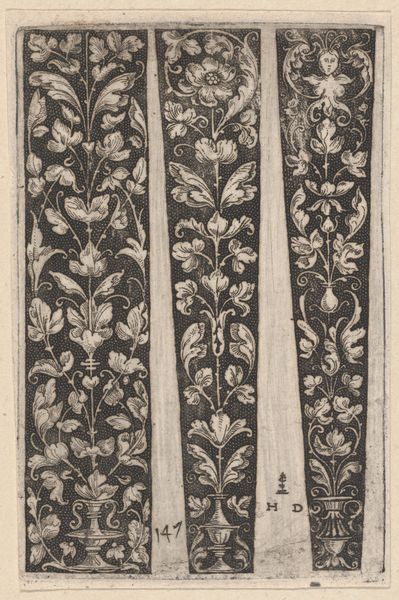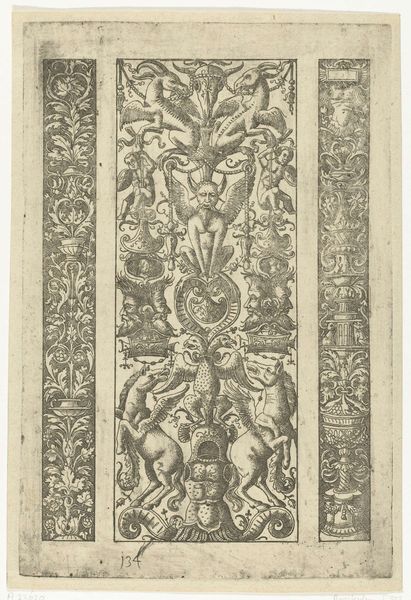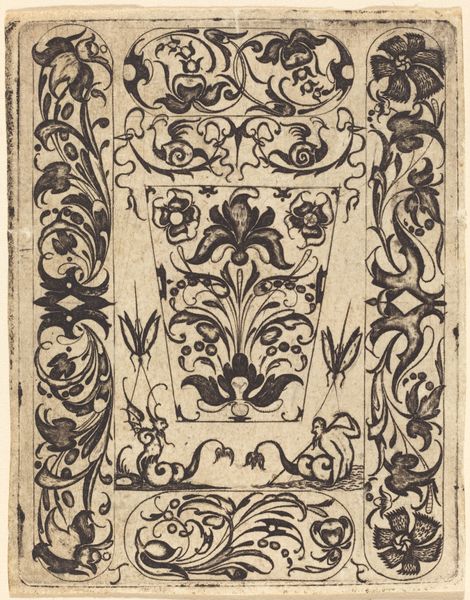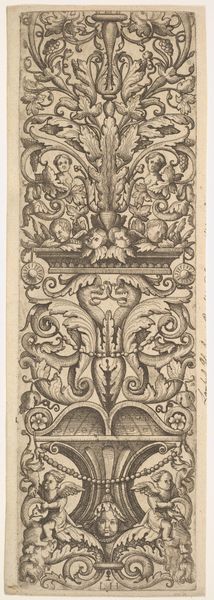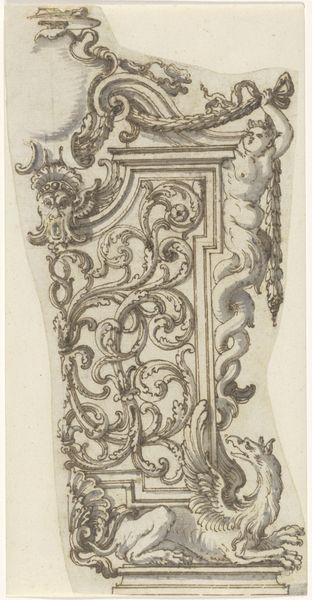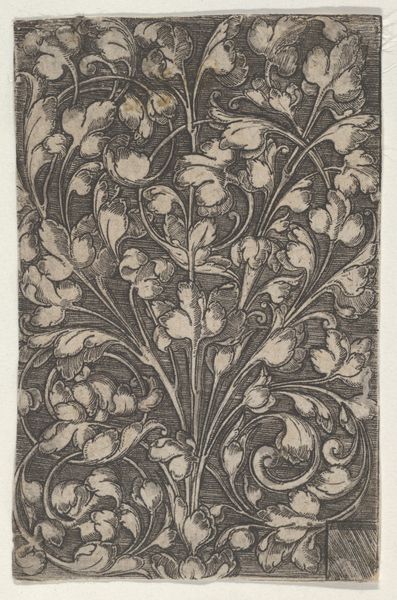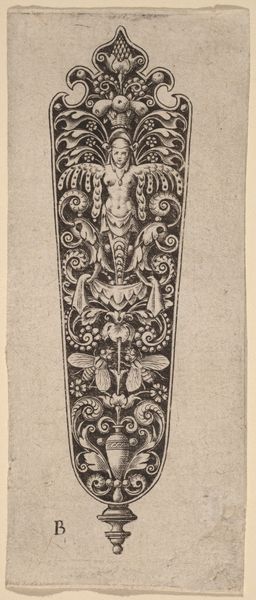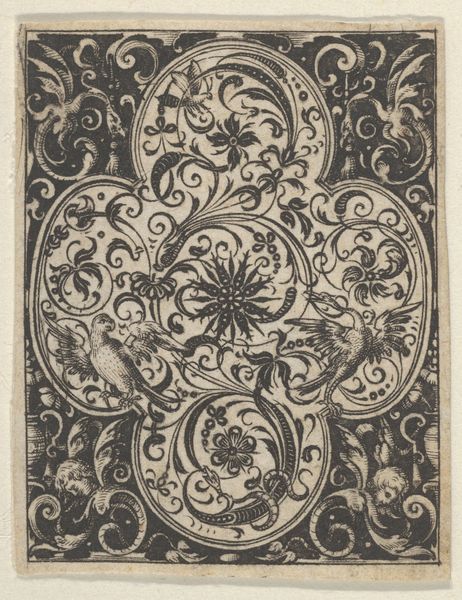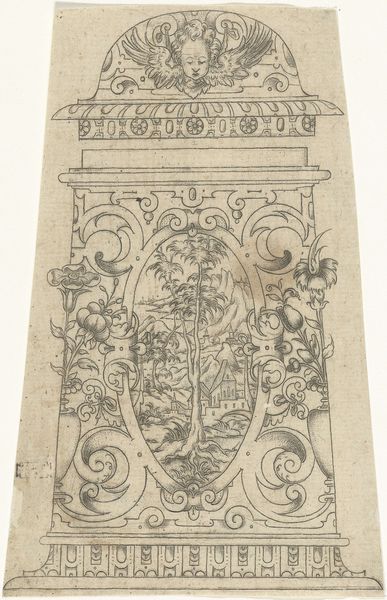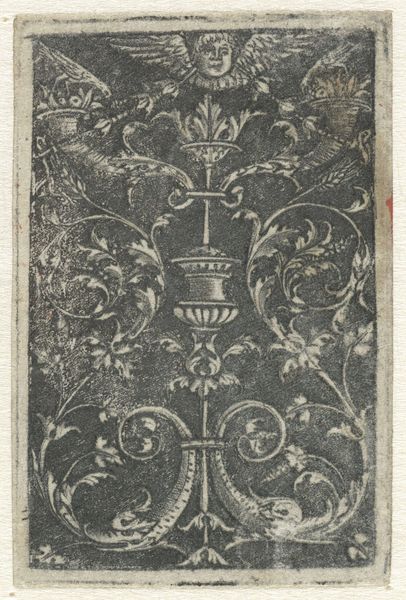
drawing, ink, pencil
#
portrait
#
drawing
#
pen drawing
#
figuration
#
ink
#
pencil
#
line
Dimensions: height 282 mm, width 88 mm
Copyright: Rijks Museum: Open Domain
Editor: We’re looking at "Randwerk met knielende vrouw," created between 1876 and 1901 by Gerrit Willem Dijsselhof, here at the Rijksmuseum. It's a drawing in pencil and ink, and there's something quite peaceful and decorative about it. What stands out to you? Curator: The work presents an intriguing case study of the fin-de-siècle interest in craft, spirituality, and the perceived roles of women. Dijsselhof situates the kneeling woman, perhaps tending a garden, within an ornamental border. This deliberate framing forces us to consider the social role of women during the rise of Art Nouveau, when the natural world was revered. Do you notice how this ornamentation is actually *containing* her? Editor: I see what you mean. It’s beautiful, but it also feels...confining? Almost like she’s a decorative element herself. Was this a common way of depicting women at the time? Curator: Depictions varied, of course, but the visual vocabulary Dijsselhof uses pulls from multiple discourses – the Aesthetic movement, symbolist imagery, and a broader tendency within visual culture to idealize women while limiting their social power. What purpose might this drawing serve? Was it preparatory for something larger? Editor: That's a good point. Perhaps it was a design for some applied art form, a tile or tapestry? The border makes me think it wasn't meant to stand alone. Curator: Exactly. And understanding that this piece likely had a functional intention, a broader use within public or private space, encourages us to rethink the agency the image might have had – both for its creator and its eventual audience. We also need to ask whose gaze it was intended for. Editor: So by looking at the history and culture surrounding the artwork, we gain a better understanding of the visual rhetoric and its intended place in society. I guess that is an eye opener for me!
Comments
No comments
Be the first to comment and join the conversation on the ultimate creative platform.
